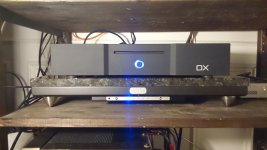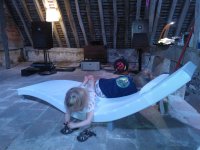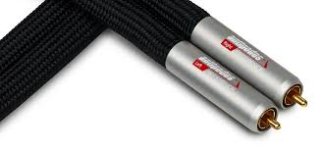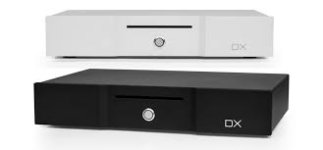Julot
New member
- Thread Author
- #1
So, in my quest for the perfect digital source for the system we'll launch in the spring, I got an Antipodes DX music server sent from New Zealand. It took a while, mostly because of French customs and delivery. And then it took a while for it to give its best (if it is there yet), not only because of the burning in and warming up, but also because it turned out that the power I was giving it was inadequate.

But after playing with cables and power plugs, I must say, it's one of the finest things I heard. I have an incontrolable urge to go through my whole disc and files collection, but at the same time no desire to stop whatever is playing. The transparency is extraordinary (and I only have very ordinary cables yet), the realism, and at the same time, every recording sounds very different, their faults are very plain, but the music is even more so, it's just taking.
Listening to Götterdämmerung recorded live in Bayreuth in 1955 stereo, this is bewitching -- those voices I only knew through the fog of old mono recordings (Windgassen, Hotter, Mödl) or recorded too late are about as precisely reproduced as in a Kauffmann recording. The acoustics of the Festspielhaus is immediately recognisable, and I surprise myself speculating about where they moved the mics between the take of July 28 and the one of Aug 14. (In July they were over the stage, with sounded somewhat strange but interesting, and there is a strong presence of crackings in the floor... and the prompter).
I am just not thinking about the machine anymore.
I'm using the Antipodes with our own Icos DAC, the Dactablette 4, which, as you can see, double as a stand. It only has coaxial inputs so I got a SOtM USB/SPDIF interface which I'm told will get even better when I give it its dedicated power supply. The rest of the system is my 40 year old Arcane system (OK, it's been updated quite a bit) with its five channel active amplification and LE-8 centered speakers. I can't wait to try the machine on more modern systems. Here's a picture of my Arcane in its precedent location, its summer house:

The Antipodes serves as a ripper, storage (1T SSD for this one) and renderer, with an USB output. It took me a while to figure out how to use it simply, but I'm there now, it's easy and efficient (my rate of ripping my collection has picked up considerably). Mark, the Antipodes guy, says that people also use it as a NAS with the Lumin with excellent results and then I imagine the direct confrontation depends on the DAC you end up chosing.
I've really been trying to listen to the Lumin -- first at a store when they couldn't make it work (for several hours) and wouldn't call me back ; then with the French importer who called off our meeting at the last minute and mentioned something about coming tomorrow but did not confirm, so I guess I'll just sit there waiting anxiously.
And this weekend I'm scheduled to try the SOtM sMS-100. I'll happily keep everyone posted, especially if I like something.

But after playing with cables and power plugs, I must say, it's one of the finest things I heard. I have an incontrolable urge to go through my whole disc and files collection, but at the same time no desire to stop whatever is playing. The transparency is extraordinary (and I only have very ordinary cables yet), the realism, and at the same time, every recording sounds very different, their faults are very plain, but the music is even more so, it's just taking.
Listening to Götterdämmerung recorded live in Bayreuth in 1955 stereo, this is bewitching -- those voices I only knew through the fog of old mono recordings (Windgassen, Hotter, Mödl) or recorded too late are about as precisely reproduced as in a Kauffmann recording. The acoustics of the Festspielhaus is immediately recognisable, and I surprise myself speculating about where they moved the mics between the take of July 28 and the one of Aug 14. (In July they were over the stage, with sounded somewhat strange but interesting, and there is a strong presence of crackings in the floor... and the prompter).
I am just not thinking about the machine anymore.
I'm using the Antipodes with our own Icos DAC, the Dactablette 4, which, as you can see, double as a stand. It only has coaxial inputs so I got a SOtM USB/SPDIF interface which I'm told will get even better when I give it its dedicated power supply. The rest of the system is my 40 year old Arcane system (OK, it's been updated quite a bit) with its five channel active amplification and LE-8 centered speakers. I can't wait to try the machine on more modern systems. Here's a picture of my Arcane in its precedent location, its summer house:

The Antipodes serves as a ripper, storage (1T SSD for this one) and renderer, with an USB output. It took me a while to figure out how to use it simply, but I'm there now, it's easy and efficient (my rate of ripping my collection has picked up considerably). Mark, the Antipodes guy, says that people also use it as a NAS with the Lumin with excellent results and then I imagine the direct confrontation depends on the DAC you end up chosing.
I've really been trying to listen to the Lumin -- first at a store when they couldn't make it work (for several hours) and wouldn't call me back ; then with the French importer who called off our meeting at the last minute and mentioned something about coming tomorrow but did not confirm, so I guess I'll just sit there waiting anxiously.
And this weekend I'm scheduled to try the SOtM sMS-100. I'll happily keep everyone posted, especially if I like something.


